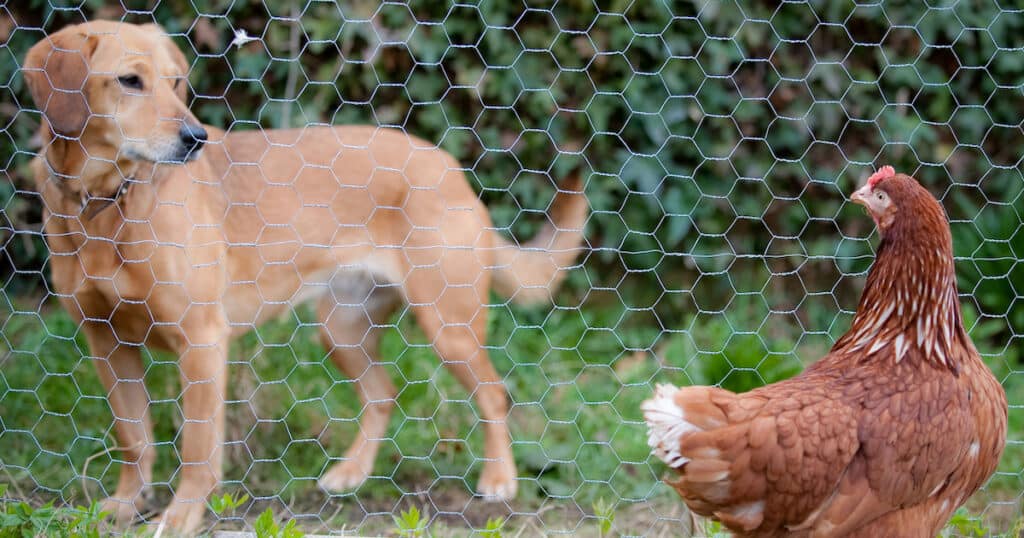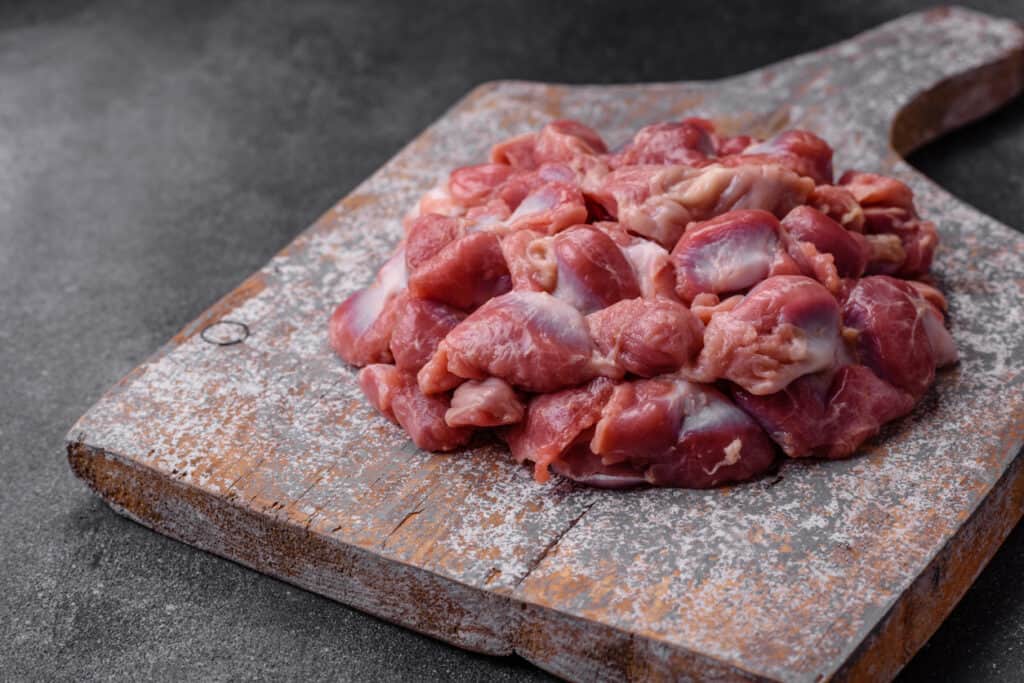
Feeding your dog a balanced and nutritious diet is a pivotal aspect of ensuring their long-term health and happiness. While traditional dog food provides a significant portion of their dietary needs, pet owners often seek to supplement their pets‘ meals with additional proteins and nutrients. Among the myriad of options available, chicken gizzards emerge as a noteworthy supplement. Let’s delve into the benefits and considerations of including chicken gizzards in your dog’s diet and explore the roles of other organ meats and supplements that can contribute to your pet‘s well-being.
Introduction to Chicken Gizzards in a Dog’s Food
Chicken gizzards, the digestive stomach muscles of chickens, are considered a delicacy in some cultures and a potent source of nutrition for dogs. Gizzards are packed with essential vitamins and minerals necessary for your pet’s health.
Nutritional Benefits of Gizzards
Offering about 45 grams of protein per serving, chicken gizzards are an excellent source of lean protein. They are low in fat and high in essential nutrients like vitamin B, which includes thiamin, riboflavin, niacin, and folate, critical for energy metabolism and cellular health. Gizzards are also a great source of minerals such as iron, zinc, copper, phosphorus, and selenium, which support various bodily functions including immune response and thyroid health.
Vitamins in Chicken Gizzards
Chicken gizzards contain vitamins that play crucial roles in your dog’s body. They are rich in Vitamin B complex which aids in metabolism and energy production. Thiamin helps in carbohydrate metabolism, riboflavin supports skin and coat health, and niacin assists in enzyme function.
Limit Chicken Gizzards as Treats
While gizzards can be a healthy addition, it is essential to limit chicken gizzards in your dog’s diet. Overfeeding can lead to an imbalance of nutrients, and although gizzards are low in cholesterol compared to muscle meat, moderation is key. Treats, including gizzards, should not make up more than 10% of your dog’s total calorie intake.
Incorporating Gizzards into Your Dog’s Food
To incorporate gizzards into your dog’s diet, it’s recommended to clean them thoroughly, then cook them in a saucepan or pot with water until they simmer. You can stir in other healthy ingredients such as carrots for additional nutrients like Vitamin C and magnesium, which are good for immunity and bone health. Avoid adding onions or garlic, as these can be toxic to dogs and may lead to vomiting or diarrhea.
The Importance of Preparing Gizzards Safely
Raw gizzards can carry harmful bacteria like salmonella, so proper preparation is essential. Cooking gizzards not only makes them safer but also easier for your dog to digest. Always remove them from the fridge and cook them soon after to limit bacterial growth.
Chicken Gizzards vs. Chicken Livers
Livers, another type of organ meat, are richer in nutrients like vitamin A, vitamin C, and iron. However, due to their high vitamin A content, they should be fed in moderation to prevent vitamin A toxicity. Chicken livers can be a good addition to your dog’s diet, but they should be an occasional treat rather than a staple.
Glucosamine from Gizzards and Cartilage
Chicken gizzards contain glucosamine, a natural compound found in cartilage. Supplementing your dog’s diet with glucosamine can aid in preventing arthritis and provide joint support, especially in aging dogs.

The Role of Chicken Hearts in a Dog’s Diet
Like gizzards, chicken hearts are a rich source of essential fatty acids, amino acids, and minerals such as copper, iron, selenium, potassium, and manganese. Hearts also provide taurine, an amino acid crucial for heart health. Including dog chicken hearts in moderation can support cardiovascular health and provide a boost of lean protein.
Benefits of Other Meats: Ducks and Beef
If you’re exploring other meats, duck gizzards and beef kidneys are also nutritious options that offer a range of vitamins and minerals. Duck is a good source of amino acids and essential fatty acids, while beef kidneys provide selenium, phosphorus, and B vitamins.
The Debate Over Raw Chicken Hearts
Raw chicken hearts, like raw gizzards, may contain salmonella or other bacteria. While some endorse a raw diet citing a dog’s ancestral eating habits, many veterinarians advise against it due to the risk of foodborne illness. If you choose to feed raw, do so with caution and consult your vet.
Inclusion of Eggs for Added Nutrition
Eggs are a fantastic and safe addition to a dog’s diet. They are high in protein and contain essential fatty acids and vitamins like riboflavin and selenium. They can be easily boiled or scrambled without any added oils or seasonings.
Managing Side Effects: Diarrhea and Vomiting
While chicken gizzards are generally safe, overindulgence can lead to gastrointestinal upset, manifesting as diarrhea or vomiting. To avoid these issues, introduce gizzards gradually and in small quantities. If adverse reactions occur, discontinue use and consult your veterinarian.
The Versatility of Chicken Gizzards with Vegetables and Grains
Chicken gizzards can be served with a variety of vegetables and grains to create a well-rounded meal. For a simple and digestive-friendly option, pair cooked gizzards with white rice and boiled potatoes. This combination provides a bland, easily digestible meal that’s perfect for dogs with sensitive stomachs. Carrots can add a sweet flavor and a dose of beta-carotene, which converts to vitamin A in your dog’s body, promoting good vision and immune health.
Remember to avoid adding any onions, as they can be extremely toxic to dogs, leading to conditions such as hemolytic anemia. Steer clear of rich spices or sauce additives like garlic and ensure the veggies are cooked thoroughly to prevent choking hazards and to make them more digestible for your canine companion.
Conclusion
Chicken gizzards can be a healthy and delicious addition to your dog’s diet when served in moderation and prepared safely. They are an excellent source of vitamins, minerals, and lean protein, offering various health benefits. Always consult with your veterinarian before introducing new foods to your dog’s diet, especially if they have existing health conditions, dietary restrictions or teeth issues.

FAQ: Frequently Asked Questions About Dogs and Chicken Gizzards
- Can dogs eat chicken gizzards every day? Limit chicken gizzards to a few times a week. Even though gizzards are healthy, your dog needs a varied diet to get all necessary nutrients.
- How many gizzards can I feed my dog? This depends on the size of your dog. Generally, a couple of small cooked gizzards as a treat or mixed with their meal is sufficient.
- Are cooked gizzards better than raw for dogs? Yes, cooked gizzards are safer as cooking kills harmful bacteria like salmonella that affect a dog’s digestive tract.
- Can I mix chicken gizzards with other foods? Absolutely. Gizzards can be mixed with vegetables like carrots and grains like white rice for a balanced meal.
- What should I do if my dog has a bad reaction after eating chicken gizzards? Stop feeding them gizzards immediately and consult your veterinarian. Keep an eye out for symptoms like vomiting or diarrhea.
